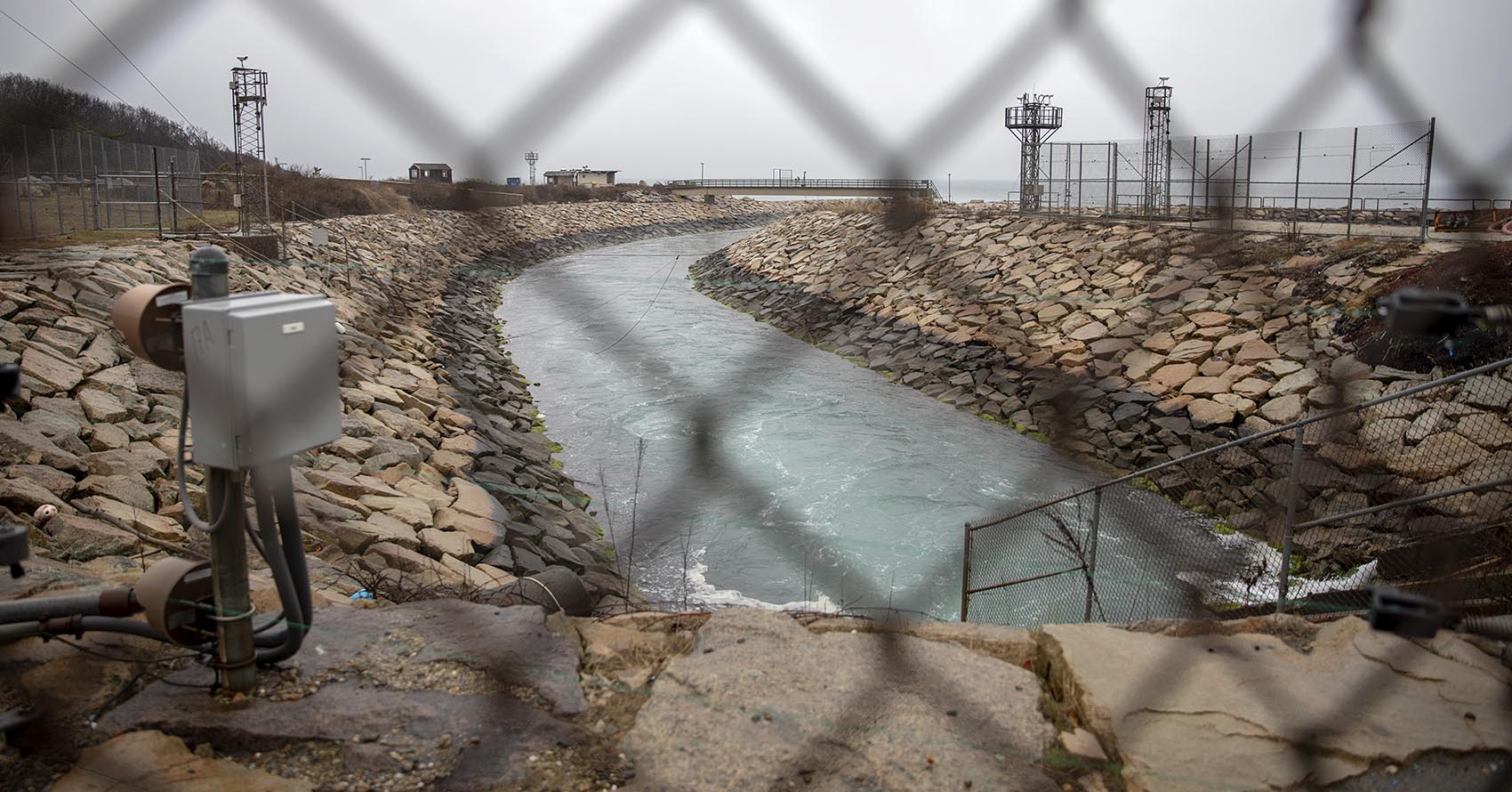For 46 Years, Pilgrim Nuclear Plant Has Used Water From Cape Cod Bay. How Has It Impacted The Ecosystem?

The discharge canal at Pilgrim, where water used for cooling at the plant is release back into the bay. Photo by Robin Lubbock for WBUR
The Pilgrim Nuclear Power Station in Plymouth pumps about a half-billion gallons of water from Cape Cod Bay into the plant every day. The water cycles continuously, passing through the plant’s condenser, and returning to the bay about 10 minutes later — and 30 degrees warmer.
Ever since Pilgrim began producing power in 1972, local environmentalists have argued the cooling system harms Cape Cod Bay in two ways: First, by killing or injuring millions of marine organisms like fish and plankton. And second, by discharging huge quantities of hot water that scour the ocean floor and exacerbate climate change-induced ocean warming.
“Cape Cod Bay is a unique and magnificent habitat and [Pilgrim] has been a very damaging influence,” says Pine duBois, executive director of the nonprofit Jones River Watershed Association. Her organization monitors protected fish like alewife and blueback herring that travel between the Jones River and Cape Cod Bay — fish she says Pilgrim has harmed over the last 46 years.
Entergy Nuclear Operations, which owns the plant, doesn’t dispute that its cooling system discharges hot water and kills fish, but it does dispute the scale of the problem.
Pat O’Brien, an Entergy spokesman, writes in an email that many claims environmentalists make about Pilgrim’s ecological impacts “are both over-exaggerated and not consistent with the decades of scientific monitoring that has been performed by various federal, state and local agencies.”
